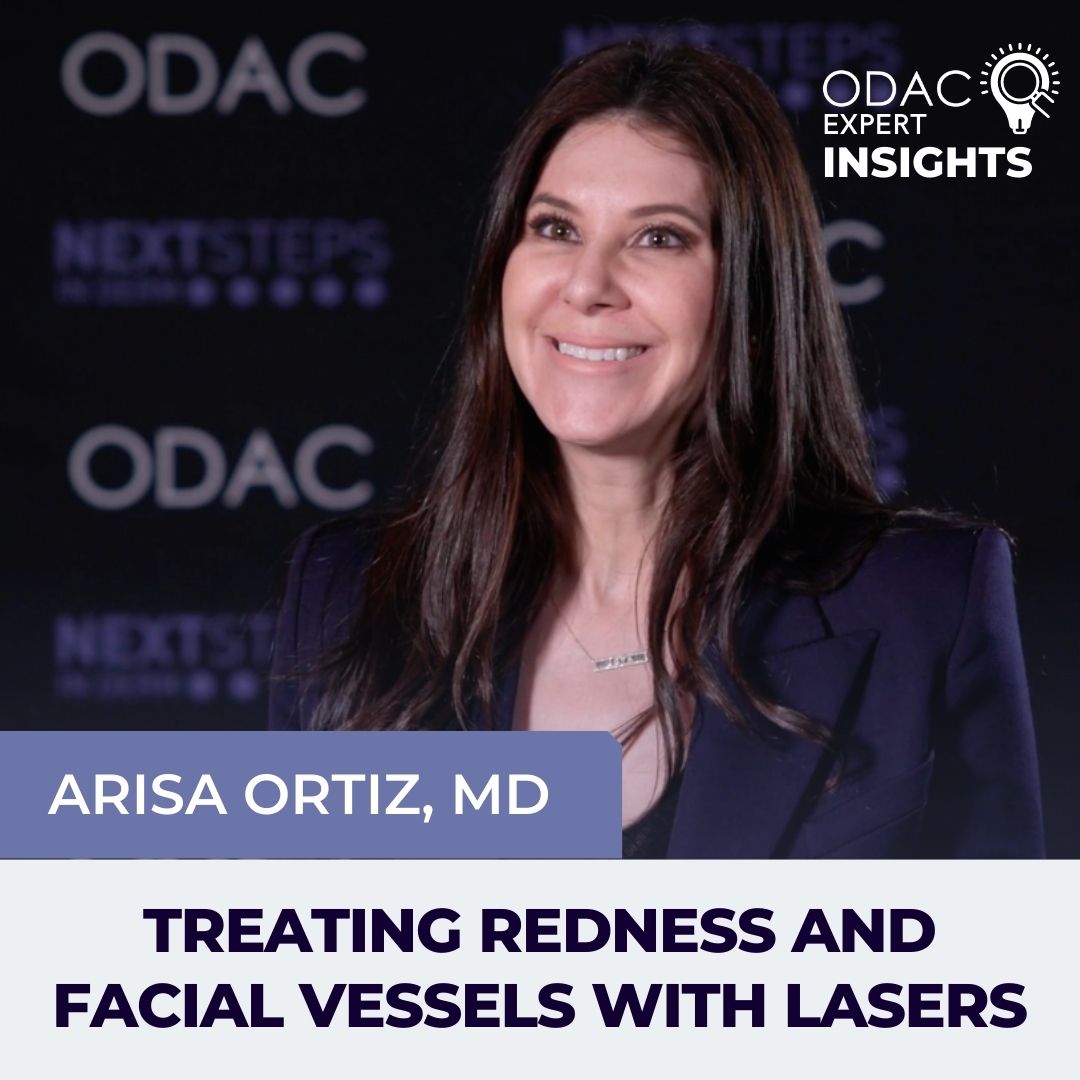Next Steps in Derm, in partnership with ODAC Dermatology, Aesthetic & Surgical Conference, interviewed Dr. Arisa Ortiz, director of laser and cosmetic dermatology at UC San Diego Health. Dr. Ortiz shares her tips in using lasers to treat rosacea and redness, which are common conditions she sees in her practice. Find out why setting patient expectations is especially important. Learn why looking for the endpoint will help you know if your settings were effective. Can patients on a photosensitizing medication get a laser procedure? Watch as Dr. Ortiz has the answer.
Further Reading
If you want to read more about treating rosacea, check out the following articles published in the Journal of Drugs in Dermatology:
Update on Facial Erythema in Rosacea
ABSTRACT
Dermatologists are cognizant of the multiple clinical manifestations of rosacea, particularly persistent facial erythema, which has been deemed to be the most prevalent diagnostic feature and often poses a significant negative impact on quality of life. To address the need to recognize rosacea as a single disease with multiple potential phenotypes, a new classification system has been developed by 28 clinical and scientific experts worldwide.
Rationale for Use of Combination Therapy in Rosacea
ABSTRACT
Background: Rosacea is a chronic skin condition characterized by primary and secondary manifestations affecting the centrofacial skin. The primary diagnostic phenotypes for rosacea are fixed centrofacial erythema with periodic intensification, and phymatous changes. Major phenotypes, including papules and pustules, flushing, telangiectasia, and ocular manifestations, may occur concomitantly or independently with the diagnostic features. The phenotypes of rosacea patients may evolve between subtypes and may require multiple treatments concurrently to be effectively managed. We report the proceedings of a roundtable discussion among 3 dermatologists experienced in the treatment of rosacea and present examples of rosacea treatment strategies that target multiple rosacea symptoms presenting in individual patients.
Methods: Three hypothetical cases describing patients representative of those commonly seen by practicing dermatologists were developed. A roundtable discussion was held to discuss overall and specific strategies for treating rosacea based on the cases.
Results/Discussion: With few exceptions, the dermatologists recommended combination therapy targeting each manifestation of rosacea for each case. These recommendations are in agreement with the current American Acne and Rosacea Society treatment guidelines for rosacea and are supported by several studies demonstrating beneficial results from combining rosacea treatments.
Conclusions: Rosacea is an evolving condition; care should take into account all clinical signs and symptoms of rosacea that are present in an individual patient, understanding that symptoms may change over time, and utilize combination therapy when applicable to target all rosacea symptoms.
Did you enjoy this video interview? Find more here.
TAGS ARISA ORTIZ, MD; LASERS; ROSACEA

